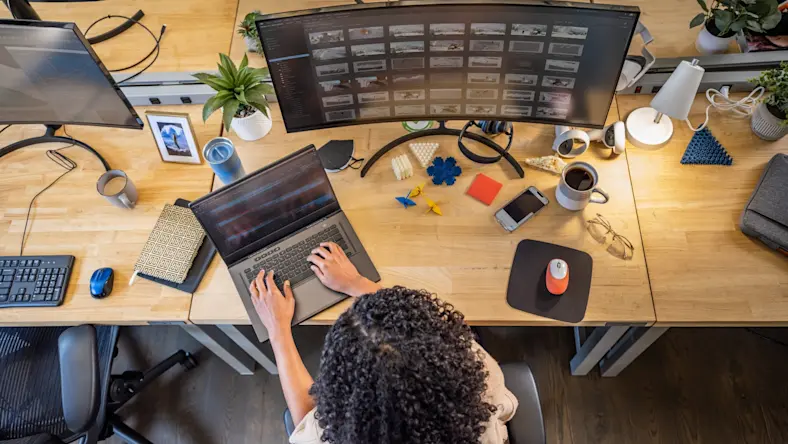& Construction

Integrated BIM tools, including Revit, AutoCAD, and Civil 3D
& Manufacturing

Professional CAD/CAM tools built on Inventor and AutoCAD
Zach Kron, Product Line Manager, Autodesk: I thought I was going to be a scientist, and I thought I was going to be surrounded by beakers and steaming cauldrons of things. Well, it’s not all that different. The steaming cauldrons are steaming cauldrons of code.
Lilli Smith, Senior Product Manager, Autodesk: I get to work with a lot of really, really smart people, and I love being able to work on really transforming how architects are working.
Varvara Toulkeridou, Senior Research Engineer, Autodesk: I love my job because I get to work on the things I’m passionate about, and I actually get the chance to influence the future of these kinds of tools.
I think the best argument for why people should use generative design is that we need to figure out ways to build denser, faster, and at the same time provide environments that are high quality of living and are sustainable.
Kron: Generative design is a way of using rules to look at the whole set of design possibilities.
Smith: It’s really a methodology or a way of using the computer to help you design. You, as a designer, may only be able to come up with three designs in a night to test out, but if you can design a design system and a way of measuring it together, then you can evaluate thousands of designs.
Kron: When people get into really complex situations of conflicting goals, usually we end up having to do things like try something and see if it works and try something again and see if it works. And generative design allows us to explore those sorts of design spaces and possibilities in a much quicker way and for some oftentimes very surprising results.
Smith: There hasn’t really been tools widely available to let architects and engineers do this kind of work. Sometimes, traditional design can be a bit like the game of Battleship when you’re saying, “Okay, H-3.” And you might get a hit or miss, and then you make another design and do that. With this, you can automate looking at all the designs at once and have all of the metrics.
Kron: And we’re trying to get to that place where you can have more satisfying solutions so you can sort of pick among them for the ones that are preferred rather than just the one that satisfies.
Smith: We are really trying to make these tools more widely available for a lot more kinds of people.
Kron: One of the challenges that comes up in a lot of the generative-design conversations that we have is stadium design. So basically, you have two fighting principles: You want to get lots of people, but you want them all to have really, really good views. There are actually some fairly straightforward mathematical calculations that you can do to quantify things like, “What is a good view?” And you can put that in opposition or in relationship to the size of the stadium. And so with the generative system in place, you can put those two kinds of principles at work to find some kind of special way of solving that problem that people may not have seen before.
Toulkeridou: A very simple case could be, I have a parking lot and I want to feed as many parking spaces as I can, in a way that streamlines the process of parking your car. Or, for example, I have a medical facility and I want to place X number of rooms, and at the same time place them in such a way that, for example, the nurse can move from point A to point B in the fastest possible way.
Smith: Another example can be in manufacturing. Say you’re looking at a very wavy surface, and you want to figure out what should the size of tiles be so that I don’t get a ton of little tiny slivers. And I want to minimize the amount of waste that I have and make it as easy as I can to construct it.
Toulkeridou: Architects, we like to explore many design options before getting to a solution in order to be able to find design proposals that actually satisfy all our requirements. This type of technology can help them be more confident and also drive more productive discussions with their stakeholders.
Kron: The direction of the industry is going to a place where projects are more and more complex. They have more and more oppositional problems that they’re trying to solve, and they’re trying to solve them more quickly. And I think that’s one of the opportunities that you have with this kind of technology. Because how can you promote and expand that way of design thinking to a larger number of people?
Toulkeridou: I am really excited by the possibilities and the opportunities that this tool can bring to the industry—and that we are part of actually driving these things.
This article has been updated. It originally published in October 2019. Phil Bernsteincontributed to this article.
Executive insights
Emerging Tech
AECO


